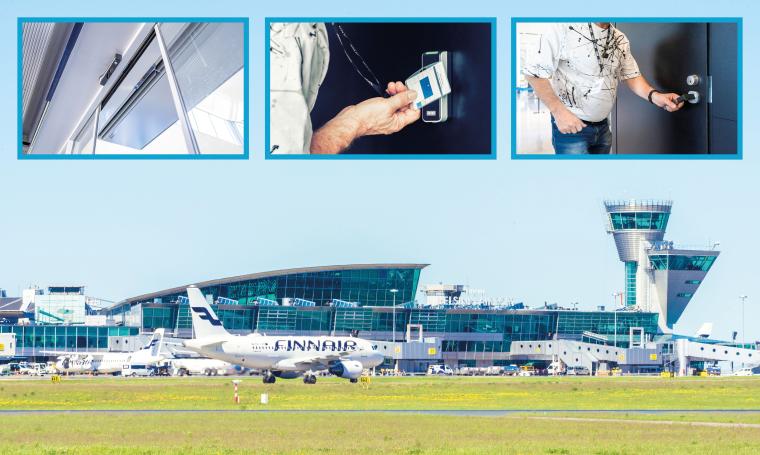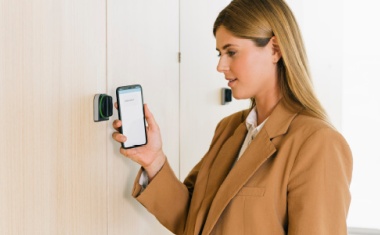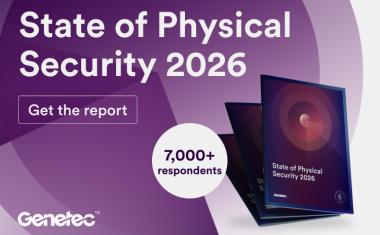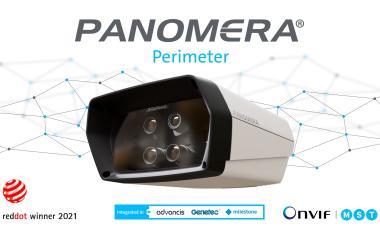The Right Bits – Interview with Kelly Gill, CTO at Assa Abloy
Digitalization continues apace in access control. But electronics are a complement to and not a replacement for robust, secure, trusted mechanical design. Kelly Gill, Chief Technology Officer at Assa Abloy Opening Solutions EMEIA, discusses with GIT SECURITY the enduring importance of mechanical locking and how it enables the latest innovations in digital access technology.

GIT SECURITY: It seems that a rapid shift to digitalization in access is underway. Why, then, do the mechanical components of locking devices continue to be so important?
Kelly Gill: Growing demand for convenience, connectivity, and new functionality is continuously extending the capabilities and choice of locking devices. Digitalization is a key enabler of more convenient and tailored access solutions in residential and commercial buildings, but the necessity for innovations in mechanical design remains as great as ever. Why? Because any new digital locking functionality needs to be backed up by intelligently designed, secure mechanical elements. It is not the electronics that keep the door bolt in position – it is the physical components.
Your role at Assa Abloy spans both mechanical and digital security technology. How does Assa Abloy aim to marry the benefits of both types of functionality in access?
Kelly Gill: The digital components of our security solutions enhance usability and convenience. For example, they replace the need to carry a heavy keychain by providing a credential – a card, key or smartphone – that can unlock several openings. In the event of a lost key or card, the digital element makes it easy to disable those specific access rights, making it unnecessary to replace the keys and cylinders. Our users enjoy the convenience of these digital features, but an effective lock requires the electronics and mechanical security to work in tandem.
If the mechanical part of the lock is flawed, the door can be opened regardless of its digital security. This is why we emphasize the importance of working with access providers who have a strong heritage in mechanical manufacturing and innovation. It is not just about choosing a solution with the widest set of features.
Are there specific elements within a lock’s design that must remain mechanical, while others can migrate rapidly to digital?
Kelly Gill: In truth, many components will remain mechanical. The latest innovations in digitalization add the convenience and flexibility that consumers now expect. One nice example is the Yale Linus, which brings flexible access to a residential door lock without the need for the customer to invest in hardware changes. The Linus’ locking bolt is a mechanical component, but it is moved into place electronically. Opening or manipulating mechanical elements like this is where digitalization comes in. I see many parallels with the payments industry: just as customers use their mobile phone instead of a physical credit or debit card, locking will also see a growing demand for solutions where mobile devices or PIN codes or fingerprints act as keys. Authentication and authorization will move to digital, while the internal mechanics keep the door locked and the space secure.
Digitalization also enables seamless integration with other products – in the Linus’ case, with smart doorbells, security cameras, and intruder alarms, all controlled by an app called Yale Home that directs the full security ecosystem.
When you choose an Assa Abloy solution, you place your trust in our reputation built on a long history of reliability and service. You can depend on us to ensure that your locks will meet – and often exceed – independent standards for security. Our in-house testing labs push every device and component to its limit, long before it ever reaches the market.
What is the role played by standards in ensuring customers get locking products they can trust? And how is the regulatory landscape evolving for mechanical and digital security?
Kelly Gill: Standards help customers to take an informed decision. They provide a scale to make security comparisons from high to low security needs, for example. Assa Abloy Opening Solutions plays an active part in driving independent standards to a higher level, to ensure that customers have access devices whose mechanical and digital components inspire their trust.
Growing focus on security is evident in the realm of IoT devices where data breaches and cyber-attacks are, alas, increasingly common. In response to the increased risk, regulatory bodies such as the European Union have begun promoting more robust cybersecurity measures, including regulating the security of products with digital components. Very soon, companies that want to sell into the EU market must show that their products meet basic cybersecurity requirements. PSTI has been introduced into UK law that sets security standards for IoT devices. Assa Abloy has always taken physical and cyber-security very seriously, but these new regulations and standards will also help us in embedding a culture of continuously assessing our practices, fine-tuning our secure-by-design approach. The higher profile for standards will also help us to communicate our security features, risks and best practices with customers – and with the industry.
We strongly believe our commitment to developing secure products – both their mechanical and digital elements – provides a huge benefit in peace of mind. Customers rely on us all over the world – whether that is the new Tekirdağ City Hospital, which needed a large mechanical master-key system for all kinds of locking points, or Helsinki Airport selecting our digital solutions for doors and cabinets to integrate with their existing access management software. We have been designing and manufacturing solutions for all types of customers, and for a very long time, developing and patenting a vast range of products for almost any application. Innovation is in our DNA.
You mention innovation, a term we hear a lot in marketing material these days! How would you summarize your innovation ethos?
Kelly Gill: Briefly, our approach is to consistently offer leading product performance in security and usability, providing solutions based on market knowledge that are tailored to the customer’s needs. We pioneer new solutions – one recent example being digital access powered by energy-harvesting technology, which enables wireless digital devices to work battery-free. And of course, in the modern world, innovation must involve taking responsibility for the sustainability of our products, with a reduced carbon footprint in production and when our solutions are in use over their full life-cycle















